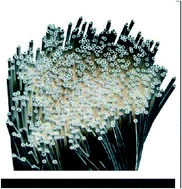Determination of the efficiency of filtration of cultures from microalgae and bacteria using hollow fiber filters
Abstract
The most important question in sampling is “Is the sample representative of the target population?” This question is necessary to understand how valid the sample taken is to the original population and if generalizations can be made from the sample. Samples taken for water quality measurement range from 1 mL for bacterial contamination to 100 mL or up to 1000 L for protozoan parasites. With larger samples taken, the confidence in detecting rare events increases dramatically. Here we illustrate that hollow fiber filters as routinely used for kidney dialysis can be adapted for environmental use. The filters retain all organisms down to viral particles and organic matter above 70 kDA, the molecular cutoff for urea, one of the waste products removed in kidney dialysis. With these filters, 50 liters of water can be filtered in about 90 minutes. Backflush of the filters recovers viable cells with minimal cell lysis that can be processed downstream for molecular analysis. Recovery rates were as high as 89% and 75% for phytoplankton and bacteria, respectively.



 Please wait while we load your content...
Please wait while we load your content...